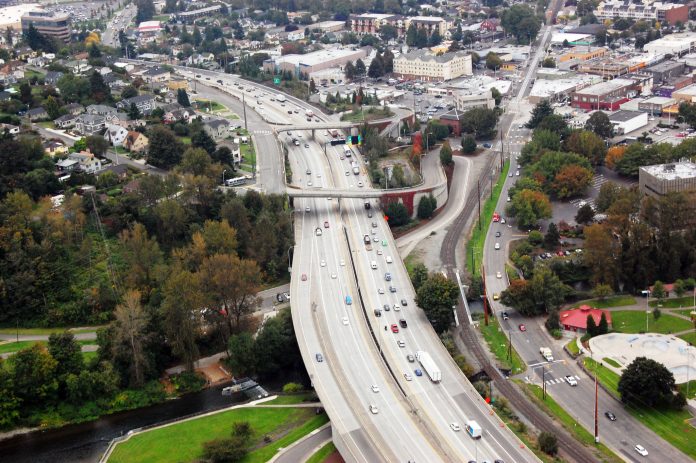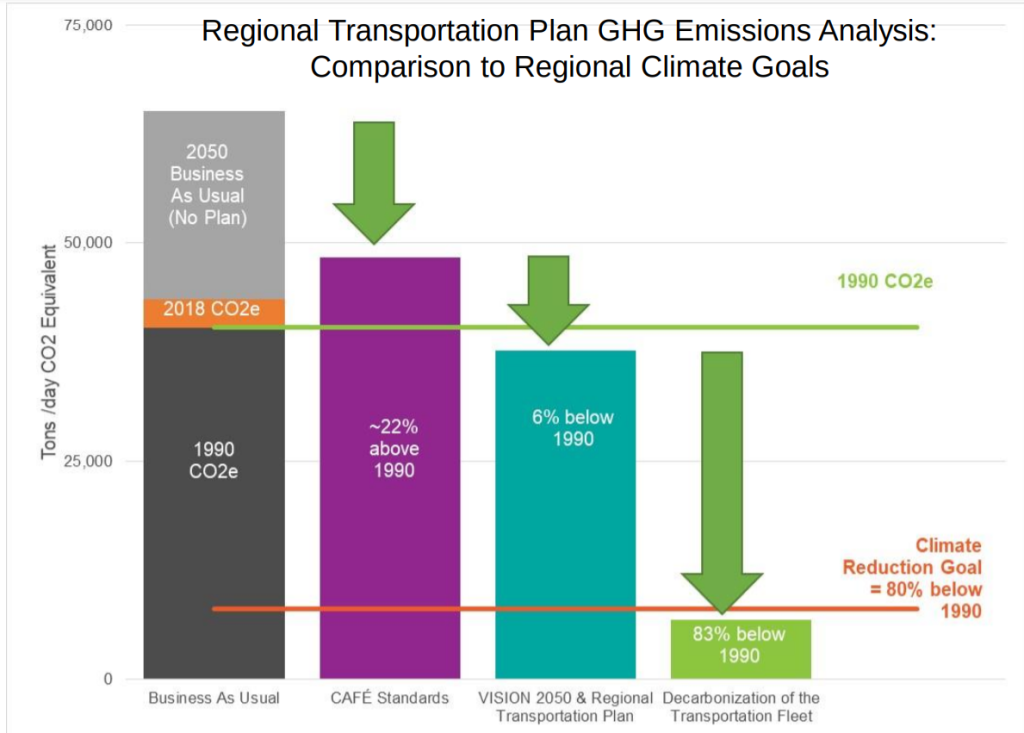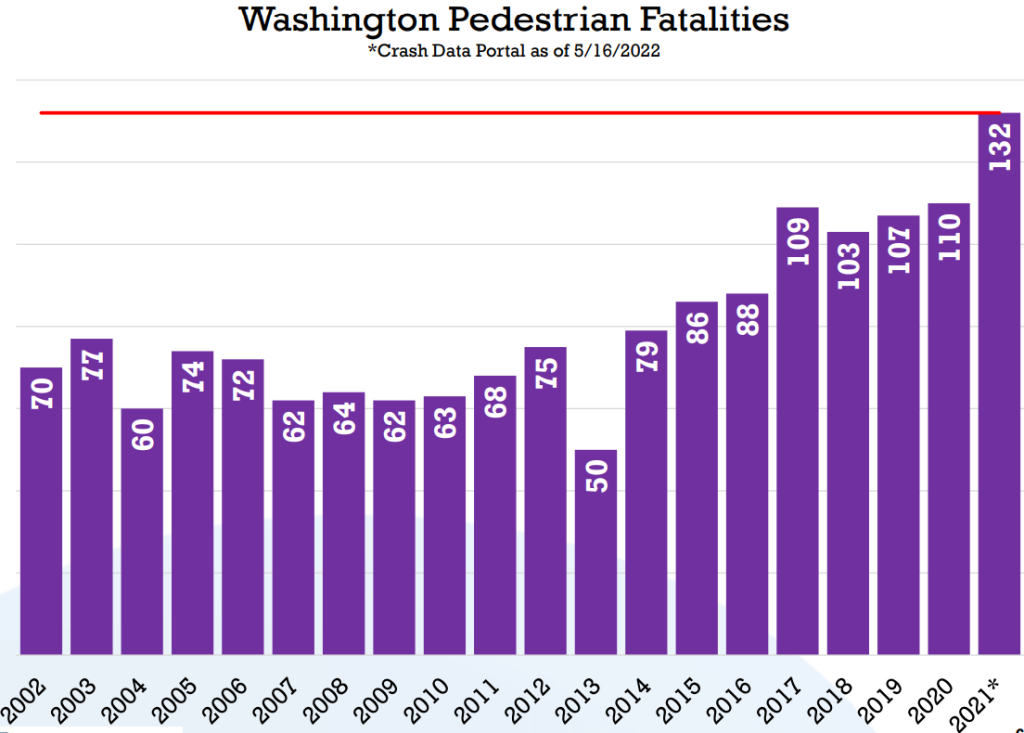
On Thursday, the Puget Sound Regional Council’s general assembly, which consists of representatives of nearly every county, city, town, and tribal government in the entire four-county central Puget Sound region, unanimously voted to adopt the latest version of a regional transportation plan. The horizon of the plan extends to 2050, but in adopting the plan, regional leaders have also voted to undertake the long overdue work of looking at how current and planned investments in transportation align with the adopted and urgent goals around greenhouse gas reduction by 2030.
The original version of the plan, released back in January, mostly geared its analysis on climate just to 2050. This timeframe would have likely set the region up to do very little to significantly change the way the regional governments are currently operating around emissions reductions, placing most of the onus to meet our long-range target on vehicle electrification or a future road usage fee that’s mostly outside the political reality of the current moment.
The plan as adopted now acknowledges that things are not currently on track to meet the goal of a 50% reduction in greenhouse gases (compared to 1990 levels) by 2030. “PSRC will continue to work with partner agencies including the Puget Sound Clean Air Agency on developing a climate implementation strategy for achieving the climate goals and to monitor progress. However, based on initial analysis of the steps needed to meet the region’s greenhouse gas reduction goals, if implementation of a road usage charge and significant decarbonization of the transportation fleet do not occur until the 2030s, it seems unlikely that the strategies outlined in this plan would enable the region to meet the adopted VISION 2050 greenhouse gas reduction goal for 2030,” language added to the plan says.

This victory on climate will likely require additional heavy lifting in the coming months. “Following plan adoption PSRC will work with its partners to develop a 2030 transportation network and inputs corresponding to the Four-Part Greenhouse Gas Strategy and conduct a 2030 analysis in alignment with the region’s 2030 and 2050 climate goals,” the plan states. Then the real work will begin to align the planned investments contained in the plan with that target: the plan calls for utilizing $300 billion in transportation spending through 2050, with a majority of that money earmarked to maintain already existing infrastructure. It’s easy to adopt a target but harder to have conversations about reallocating resources. However, just getting that into the plan was a huge step.
The fact that the plan was steered to focus on the near-term goal of 2030 is largely attributable to the work of several key regional elected officials serving on PSRC’s boards. PSRC’s current President, King County Councilmember Claudia Balducci, raised the alarm about how climate was treated in the plan back in December, and doggedly pursued amendments around the issue through to the adoption of the plan. It’s easy to imagine a different PSRC president not going that extra mile.
“We also included greater transparency around how much GHGs our transpo system can afford to emit in the next decade, [and] a process for learning how much each of our implementation actions (like new transpo funding) will contribute toward that limit before we make decisions,” Balducci wrote on Twitter after the plan’s adoption. Elected officials agreed to look at the climate impact of future projects when making decisions but backed away from amendments that would have committed PSRC to take any specific actions.
For the first time, the region will create a transportation safety plan
2030 is a significant milestone for the region’s climate work, and it’s also a big milestone for another transportation metric: Washington’s long-time goal of eliminating serious injuries and fatalities on our roadways. With crashes involving people outside vehicles at the heart of the escalating number of traffic deaths in Washington and regionally, the work to create a safer network for people to walk and roll is completely interconnected with the work to eliminate traffic fatalities. The region isn’t on track to meet this 2030 goal either, but the 2050 regional transportation plan ensures that work will happen soon to create a regional safety plan, something that is long overdue.

In addition to Balducci focusing on this issue, the push to center safety in the plan also came from leaders in the city of Bellevue, namely Councilmember Jennifer Robertson, as well as Pierce County Councilmembers Ryan Mello and Derek Young. The newly created regional safety plan will include targets, performance indicators, and, most importantly, long overdue actions.

PSRC’s work on active transportation will also be used to create a new stand-alone active transportation plan. Less groundbreaking, the real win will be when both the newly created safety plan and the active transportation plan are used to inform future regional and local planning. The amendment to actually utilize what the newly created plans say was actually fairly controversial, with many jurisdictions including WSDOT voting no. This underlines how attached representatives of the various jurisdictions involved in PSRC are to the current ways of operating and just how heavy a lift it will be in the future to pry those systems out of the regional body.
It’s worth noting that this major thirty-year regional transportation plan was one that was largely created without heavy influence from the region’s largest city, Seattle. No major amendments were proposed by any of the Seattle representatives on either the Transportation Policy Board or the PSRC Executive Board. The decision of many electeds in the city to step away from being a leader on the key issues impacting our region of 4 million people is highly noticable, and it has been invaluable for other key elected officials to step in to fill the gap. It remains to be seen how influential Seattle will be in the development of the key plans and actions that are going to be required next.
The Regional Transportation Plan is far, far from perfect. The assumptions baked into the plan assume many aspects of the status quo will continue — total Vehicle Miles Travelled across the region will continue to increase, for example — and it is far more concerned with major transportation projects than it is with providing tools for communities to be able to allow people to get around without needing a vehicle. But largely thanks to the tweaks made in the four months since its release, it does provide a blueprint for the region to deal with some of the most pressing crises impacting it.
Elected Leaders Contemplate Giving Regional 2050 Transportation Plan More Teeth | The Urbanist
Ryan Packer has been writing for The Urbanist since 2015, and currently reports full-time as Contributing Editor. Their beats are transportation, land use, public space, traffic safety, and obscure community meetings. Packer has also reported for other regional outlets including BikePortland, Seattle Met, and PubliCola. They live in the Capitol Hill neighborhood of Seattle.

